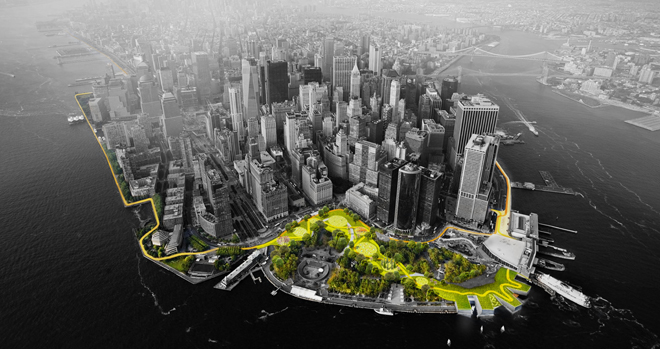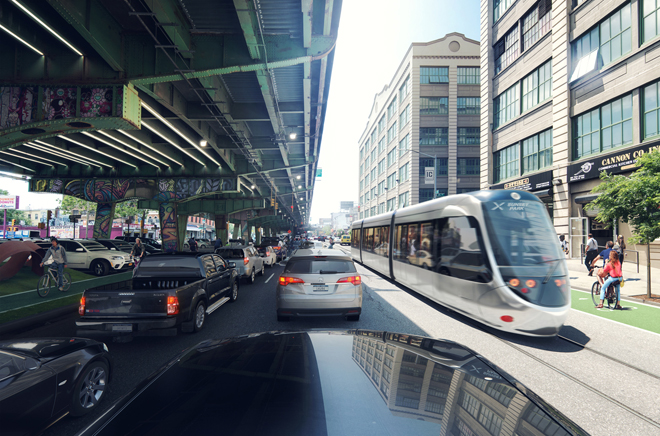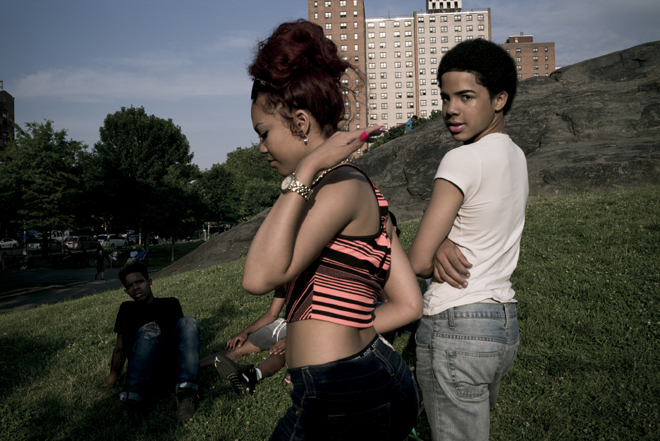The Future City Lab
A Conversation with Director Kubi Ackerman
Tuesday, October 11, 2016 by
The 400 years of history covered by New York at Its Core don’t end with yesterday. The exhibition’s third and final gallery is the Future City Lab, which brings the focus to New York’s present, and looks ahead.
Inside this interactive gallery space, Museum visitors will explore five central challenges and opportunities that New York will face in coming generations: how the city will house its growing population, how it can retain and foster diversity, how New Yorkers will get around, make a living, and grapple with the impacts of climate change and other environmental factors.
Project director Kubi Ackerman, who is working with guest curator Hilary Ballon on shaping the Future City Lab, sat down to discuss the exhibition and the role visitors will play in the ideas that unfold there.


With such a huge span of history to cover—1609 to the present day—why did the Museum decide to jump into the unknown?
The idea of having a gallery on the future of anything is itself a provocative and somewhat paradoxical concept, and one that challenges the traditional role of a museum, which is often to help interpret the past. But the story of New York is ongoing; the city is facing enormous challenges and opportunities, and we want to give visitors a sense of what those are.
Are these challenges particular to New York?
Almost all the topics we are addressing are directly relevant to cities around the world, and we show examples of strategies from elsewhere which can serve as precedents for how we can address the challenges at home. For example, we’re looking to cities in Europe and Asia that are constructing floodable infrastructure, or places that have integrated driverless vehicles into their transit systems.
….Driverless cars! Why do we need to ponder these types of things when there are so many more immediate problems to solve now?
Actually, driverless cars are not a far-fetched idea – the future has a way of sneaking up on us more quickly than we anticipate, and we would be well served if cities were to plan proactively for potential impacts. All of the challenges and solutions we address are relevant for at least the next generation if not longer.
“
The real experts on the future of New York are New Yorkers who are living it, and whose decisions will determine what kind of city this is in the future. So our job as curators is to spur the imagination, start conversations, and empower visitors to feel a sense of agency.
”
Kubi Ackerman
Why is it important for the Museum of the City of New York in particular to present ideas about the future?
For all of its problems, New York City is a place that has a unique capacity to inspire. It has shown throughout its history that it can be at the forefront of grappling with issues of long-term environmental sustainability, transportation, and the development of institutions to integrate its diverse population into civic life. If we can make change happen here—with all of our density, diversity, and the various challenges we face—then it happens elsewhere as well.
So what do you recommend we do, as someone who studies the future?
The Future City Lab doesn’t traffic in specific recommendations or predictions – the track record of futurologists is poor. The sense that there are some experts out there who have special insight into what is going to happen is a dangerous one, because we have a collective responsibility to shape the future. The real experts on the future of New York are New Yorkers who are living it, and whose decisions will determine what kind of city this is in the future. So our job as curators is to spur the imagination, start conversations, and empower visitors to feel a sense of agency.
For each of the challenges you encounter in the Future City Lab, we have a section on a variety of strategies, to indicate that there are different paths we can choose, with different implications. We present images of potential approaches here, because the first step in creating change is being able to imagine what it looks and feels like. There are also three different games to play—you can design a building (for the challenge of housing a growing city), a park (for the challenge of living with nature), or a street (for the challenge of getting around).
What do you hope these games and interactive will help visitors learn?
The games encourage visitors to step into the role of a designer or planner and make decisions about what to do with a specific site, which may involve difficult tradeoffs. But perhaps even more importantly, they are a way of engaging in a creative and playful way – these are serious issues, but that doesn’t mean thinking about them can’t be fun. The games reward experimentation. The outcome of the visitors’ designs will be displayed at almost full scale on the gallery walls, and motion sensors will allow people to step into their vision for the future and see themselves as part of the scene.
It’s important that people understand the implications of questions like climate change, economic growth, or decreasing affordability—how we tackle these challenges is a huge question. If visitors come away with an understanding of the issues, we hope they’ll feel like they can participate not only in the discussions but in the decision-making that needs to take place now in order to make change.

Besides the interactive technologies, what else can visitors see in the gallery?
We have a section of neighborhood photos taken by street photographer Joseph Michael Lopez, that show how the challenges are manifested in specific places. There’s a great benefit in the role of images to stimulate the imagination and to ground what are otherwise abstract concepts in human experience.
We also have a video piece by Neil Goldberg, who interviewed a diverse array of people on the street on how they feel about New York now, their fears and hopes for the future. It’s a reminder that we’re talking about real people. You hear their voices right as you enter the gallery, which helps us reinforce a key message: the Future City Lab is a place for discussion.

